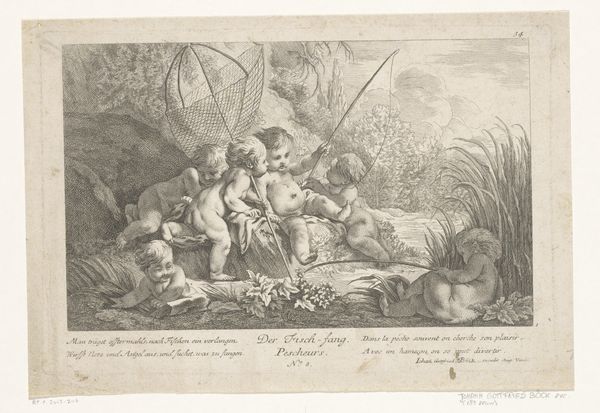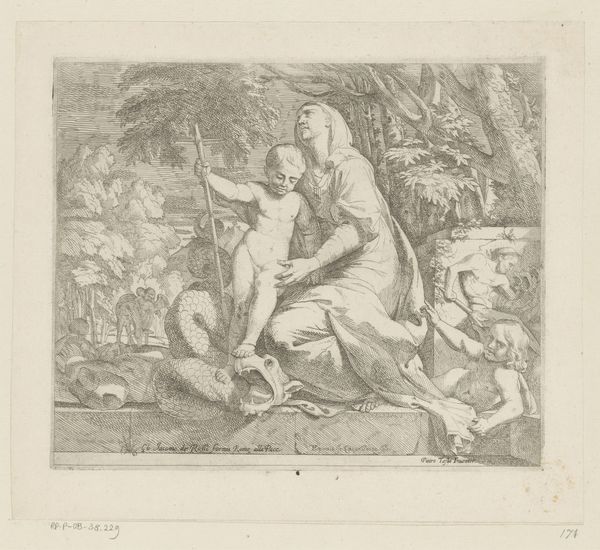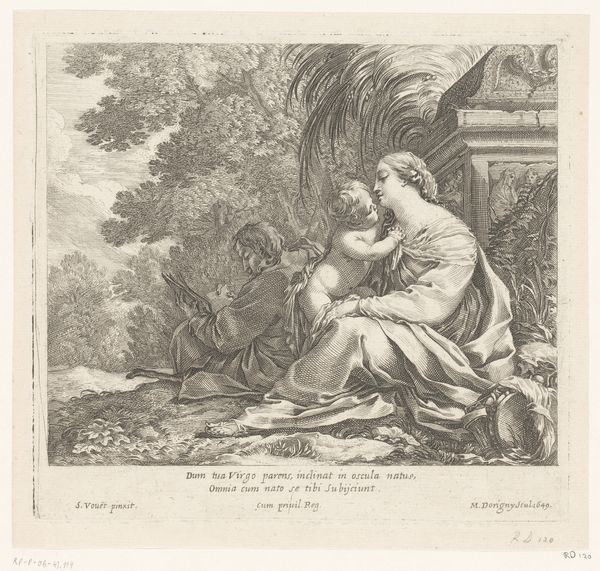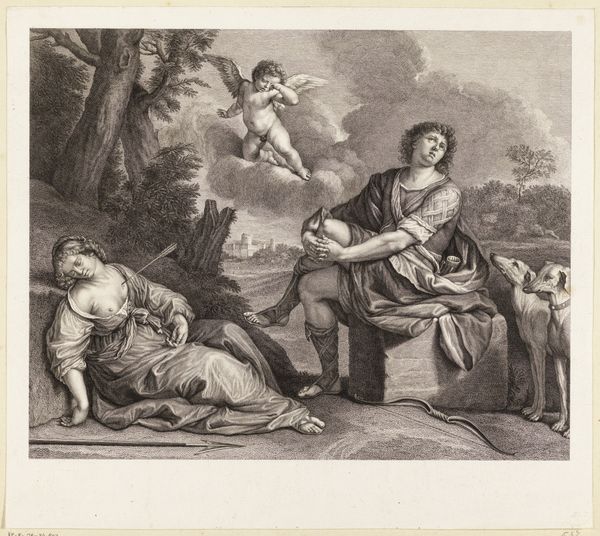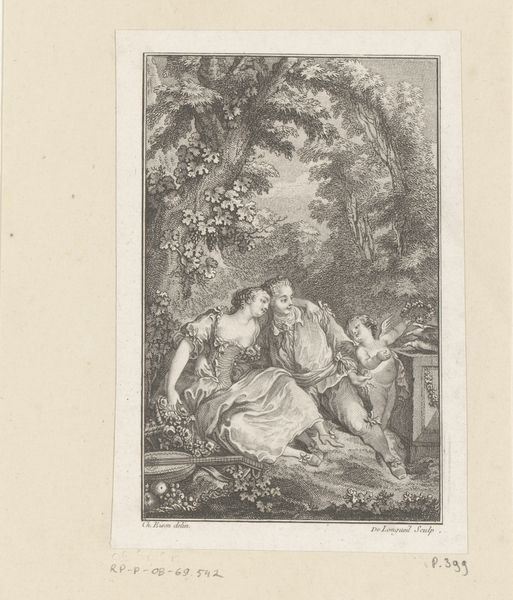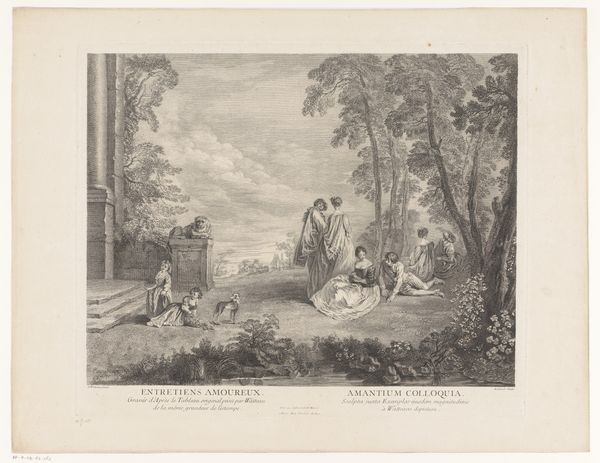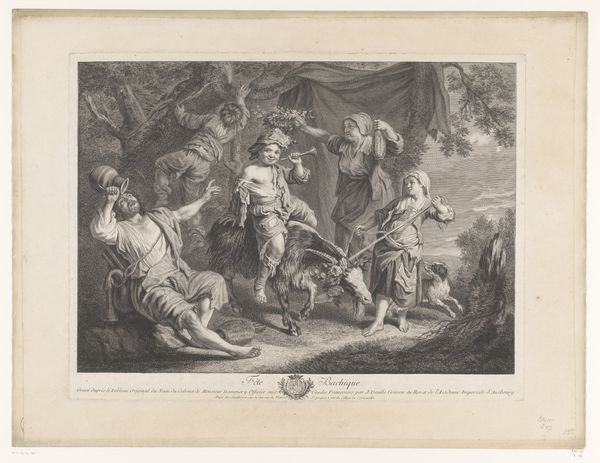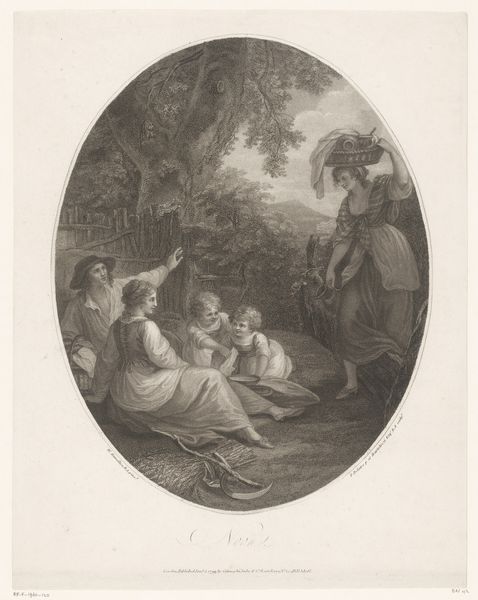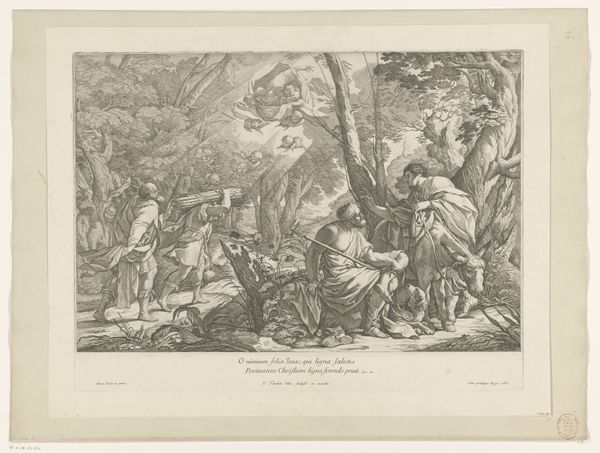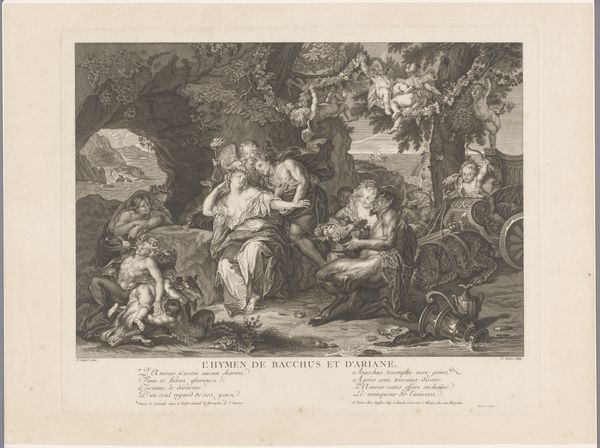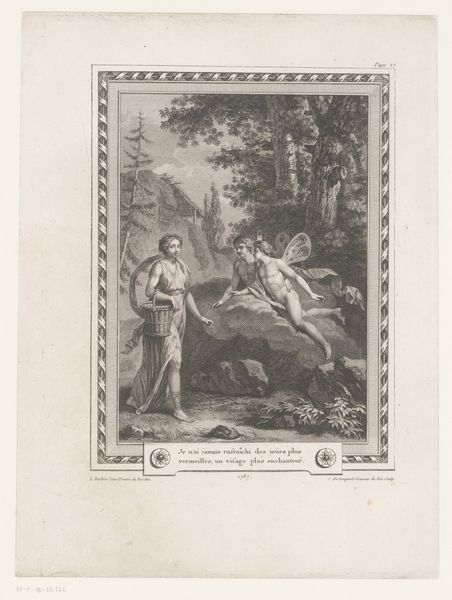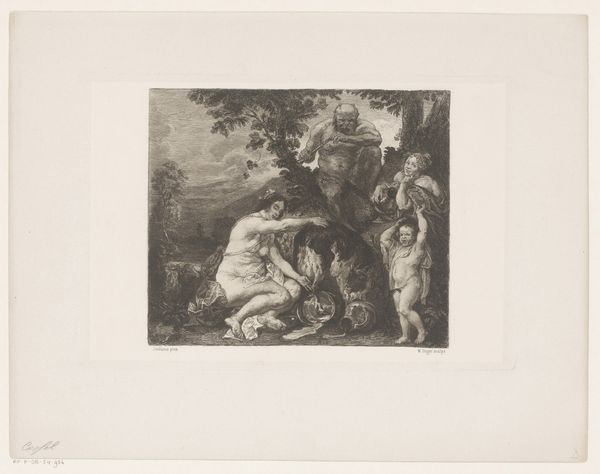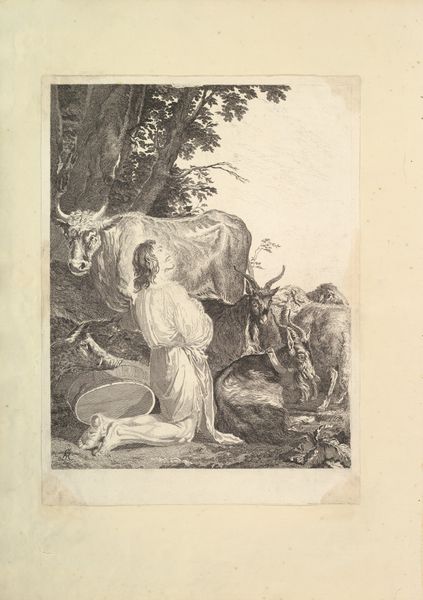
print, engraving
#
baroque
# print
#
landscape
#
figuration
#
history-painting
#
nude
#
engraving
Dimensions: height 142 mm, width 178 mm
Copyright: Rijks Museum: Open Domain
Curator: What strikes me immediately about this engraving is its theatrical air. The almost lurid contrast of light and shadow makes the scene feel like it’s unfolding on a stage. Editor: You’ve tuned right into the Baroque drama of it. Here we have Abraham Delfos’ 1752 print, "Narcissus Gazing at his Reflection in the Water," now housed in the Rijksmuseum. Look how he captures that moment of doomed self-adoration. Curator: Doomed indeed! And aren't the supporting characters wonderful? A little cupid whispering sweet nothings, some lounging dogs and a woman in the back--an unwanted admirer perhaps? The layers create such tension! Narcissus seems absolutely caught in a trap of his own making, a self-made idol. Editor: The image draws on a very specific type of visual vocabulary. A nude male figure, here rendered in the idealized form, always signifies vulnerability. And his positioning near water – well, water in mythology so often serves as a threshold. He’s staring not just at himself, but into some portal of transformation. Curator: I feel for the guy, you know? Who among us hasn't fallen down that rabbit hole of staring into our own image, trying to find some truth? Editor: Absolutely. It’s a timeless myth. This story speaks so powerfully to how easily love and obsession can become confused, and that one’s own identity can easily get contorted when mediated by our reflections or others' desires. See, even now, it’s like when someone filters themselves online--all the visual manipulation mirrors Delfos' message about illusion! Curator: The medium really amplifies that feeling of illusion too, doesn't it? The engraving gives the figures an almost spectral quality, as if they’re just figments of someone's imagination, including, maybe, Narcissus’ own. Editor: Exactly, printmaking creates a sense of distance between subject and viewer. We’re seeing a copy of a copy, which reinforces that layer of unreality. Thanks to Abraham Delfos, it encourages introspection about the roles of myth and image in reflecting our very selves. Curator: What a stark fable. Perhaps this haunting image offers a lesson: let’s not allow our reflections to swallow our substance.
Comments
No comments
Be the first to comment and join the conversation on the ultimate creative platform.
